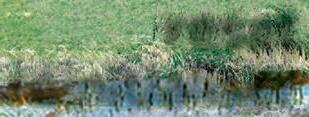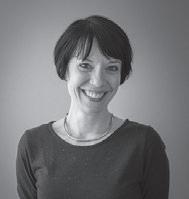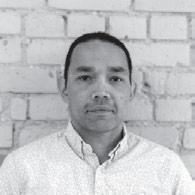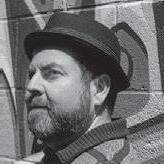OUR WRITERS | NOS RÉDACTEURS
Michael Grove, FASLA is the Chair of Landscape Architecture, Civil Engineering, and Ecology at Sasaki, a global design firm with offices in Boston, Denver, and Shanghai. His world view is shaped by his two young children, both avid explorers of nature who deserve to experience the wonders of the world without the risk of planetary collapse.
STÉPHANIE HENRY
Stéphanie Henry, AAPQ, AAPC, cofondatrice de Castor et Pollux, développe une pratique professionnelle fondamentalement transdisciplinaire entre art, design et paysage. Faire la ville par le territoire, défendre l’espace public ouvert et générer un droit à la ville autour d’espaces vivants, guide les projets d’aménagement auxquels elle participe. Ayant exercé en France, en Afrique et au Canada, ses référents urbains sont pluriculturels et sa pratique est multiple allant de l’étude des grands paysages, aux projets d’aménagement d’espace public en passant par les ateliers participatifs de fabrication urbaine. L’intégration des citoyens et leur participation in-situ lui sont essentiels.
landscape architecture’s vital role in regeneration and renewal. Matthew co-founded Brackish Design Studio in 2019.
Halifax and Saint John. At Brackish, Sandra’s work focuses on projects that respect and highlight the unique beauty, culture, heritage and ecologies of coastal sites.
Ryan Gorrie is a Principal Architect with Brook McIlroy, leads the Winnipeg office and is the director of the Indigenous Design Studio. A member of Bingwi Neyaashi Anishinaabek, Ryan strives to ensure perpetuation of Indigenous culture through creative opportunities ranging from the crafting of traditional items to large-scale landmark architecture.
Ruth A. Mora is an artist and designer and co-founder of SUMO Project. She likes creativity as a force for change. She uses human-centric design and art to build bridges between spaces and communities, focusing on the contributions of art in public spaces and communal engagement. She is currently writing a book on that subject.
DAVIDSON
Jenna Davidson is a Planner at Brook McIlroy in their Toronto office. She has a Double B.A. in Anthropology and Environmental Studies from the University of Victoria and a Master’s in Environmental Studies and Planning from York University. She is deeply inspired by interconnections between people and place.
landscapes and urban design projects that elegantly fuse complex social and ecological mandates. SeeYin is currently leading the public realm and streetscape design for Waterfront Toronto’s Port Lands Flood Protection and Enabling Infrastructure Project, a project that provides the organizing framework for future redevelopment of the area.
Gaston Soucy is an architect, urban designer and co-founder of SUMO Project. He believes that “specialization is for insects,” which has taken him to develop a variety of design skills to explore how creative practices can contribute to improve the spaces we inhabit while incorporating art as a mediator.
Toby Jurovics is the founding director of the Barry Lopez Foundation for Art & Environment, which works with contemporary artists to create exhibitions about climate change and our changing relationship to the land in a time of environmental crisis. He is fascinated by the way the edges of the ground glass or viewfinder define the landscape.
Between borders shifting, collapsed meaning and future changes, the pandemic slapped the face of our constructed society and the norms we sunk into. Where the collective consciousness of humanity drifts remains a question. There is never short or definite answers to the future of landscape architecture. I want to think big but stay humble and hold constant the belief that the “true” things that exist – the mountain, the ocean, the air we breathe, the physical object we made and touch – they are what they are. The core of landscape architecture, and so too its future, is rooted in our relationships with everything other than the self. Now or then, how we see, read, communicate, move and reshape the true existence of others will write down the future for us.
— Yuan Zhuang, Snøhetta
TOBY JUROVICS
JENNA
RYAN GORRIE
RUTH A. MORA
GASTON SOUCY
RUTH A. MORA + GASTON SOUCY
THE ROLE OF ART AND DESIGN IN TIMES OF CRISIS
>FR_LP+ HUMANITÉ PUBLIQUE : LE RÔLE DE L’ART ET DU DESIGN EN TEMPS DE CRISE
Les places publiques et les activités collectives alimentent le sentiment d’appartenance au sein d’une ville. La place publique joue un rôle important dans la dynamique de la démocratie, en offrant un lieu neutre où les citoyens –indépendamment de leurs origines sociales, économiques, politiques ou culturelles –peuvent librement interagir, échanger et pratiquer des activités communes.
A CITY’S SENSE OF COMMUNITY is often perceived in the public spaces and activities that we share together. Public spaces play a major role in the development of democracy, providing a neutral place where people – regardless of social, economic, political or cultural backgrounds – can have recurrent interactions, engage in casual conversations or enjoy common activities. They create a stage for everyone to participate and adapt in a levelled playfield, promoting social integration and building on the multicultural identity that define modern metropolises.
Public spaces talk to us about ideas of togetherness and represent ”a democratic vision of open space” that dates back to the ancient Greeks. On a globalized world, public space has been under constant
political scrutiny as the quantitative versus qualitative debate has been measured in economic terms where dwindling public capital investment along with operation and maintenance budgets are weighted against the overall wellbeing of its end users. Having an impact on quality and justice, segregating the less fortunate to the available leftover spaces where the privatization of the public space had been expanding to either encroach onto, or sometimes even eliminating, publicly accessible space.
The global pandemic stoppage tested this formula in a radical way. In the rare state of immobility that materialized during this time, the importance of public space was reaffirmed, reminding us of the profound effect they have on
how we live and relate to each other, providing a much needed escape valve from the anxiety of an uncertain future and a way of reconnecting with friends and neighbours. Calling upon the importance of our role and responsibility as art and design professionals to keep human-centric design, inclusiveness and universality in the forefront of our projects.
The 2020 Menino Survey of Mayors (bit. ly/MeninoMayorsSurvey), a document produced by Boston University Initiative on Cities, presented dramatic increases in reallocating street space during the pandemic, some of which are intended to be implemented permanently.
Furthermore, the survey showed a drastic change in resident behaviour post-COVID when it came to increases in activities such as visiting parks and green spaces, biking and walking. Although this is US-based data, similar trends could be observed in Canada.
Canadian cities started reclaiming spaces by adapting other uses to support activities for people of all ages and abilities. This gave us the opportunity to experience better cities, even if temporarily. Strategies such as replacing traffic with “open streets,” roadways with bike lanes and underutilized
spaces and parking spots with seating and places to eat became ubiquitous. These decisions and changes were implemented fast, with a sense of urgency, in an effort compensate for the inability to partake on public indoor activities and for the lack of adequate personal space at home.
Coincidentally, those were some of the premises behind a project that SUMO Project undertook right before the pandemic started, the Kensington Market BIA Public Realm Masterplan, with one additional layer: art. We proposed a design and art strategy that would transform some of the existing mundane spaces into more welcoming, active public places that would be more inclusive and exciting to use, play, learn and visit.
Capitalizing on the existing local community assets and art culture already present in the Market, we worked on expanding the role of art in public spaces as an essential tool to create community bonding and development while strengthening the connection between the commercial side of the Market and its community. The idea was to use art as part of the improvements and engagement, where local artist, communities and city officials would work together, building trust and strengthening social cohesion. Using public art as a medium to create a “participatory culture.” thereby facilitating communal decisions that could result in social, economic and spatial benefits,
ART ON PARKING STRUCTURE FAÇADE TO PROVIDE A SENSE OF ENTRANCE
ADDITIONAL VENDING FOOD KIOSKS TO SUPPORT THE “MARKET” FUNCTION
PEDESTRIAN COMFORT WITH CURBLESS STREETS
create the foundation for a comprehensive long-term strategy “by the market for the market.” The goal was to mitigate some of the existing physical and infrastructural problems and challenges such as accessibility, lack of public space and softscapes, through community building principles that would allow for the gradual implementation of the Masterplan by way of smaller locally lead pilot projects. Projects that could be easily implemented
recapture some of its underutilized public spaces for the better good and use of the community.
When the pandemic hit, our daily routines came in conflict with our ”normal” responsibilities, challenges, desires and our usual ways of living. Under this new reality, it became urgent for us to understand that, despite our differences, we were all connected; we needed to find new ways for cities to adapt to new challenges.
We needed to redefine ”togetherness”, physically and as a society, we had to generate new forms of thought.
We gained an understanding, that one of the most important roles of creative practices was to find new ways of being together, keeping the collective memories of what it is that makes us human. Adding value, joy and enriching the urban environments by bringing back the human aspects of living, the serendipity of spontaneous actions and encounters, the joy of celebrations and gatherings. For those reasons, we looked for ways of affecting the public space in a way that could evoke feelings of hope, solidarity and added humanity, acknowledging that art and creativity have an essential part in times of crisis. Art and creativity can foster dialogue between urban and everyday life, becoming a way of understanding space and its social significance; a shift from traditional approaches that prioritize on functionality, to those based on a multidimensional measure of wellbeing that includes the physical, mental and social aspects, giving them equal importance.
Drawing from the Kensington Market Masterplan experience, the “Flowers for the Harbourfront” project proposes to use art and design to create a place that
to bring joy and purpose. Something that was essential after several prolonged lockdown periods, and other measures that seriously affected the relationship among people and their perception of empathy toward others.
This large-scale, site-specific art installation designed for the Toronto Harbourfront, is a summer-inspired eco-friendly “fresco” of approximately 3,000m2 that is only perceivable in its entirety from the air. It depicts a collection of flowers in an artistic arrangement in which each “flower” is in reality a designated area where colours determine seating arrangements at a socially safe distance. The “stems” are arched pathways that also delineate where to safely walk through the spaces and in between the flowers.
Creating a dialogue with its surroundings, this artwork is an opportunity to reinvest in the precious but fragile relationship that we have with the natural systems that surround us. It transforms the space while creating a meaningful connection
for all – as well as the time and space to think about the day-to-day life, to inspire actions that channel the discomfort, the fear, the uncertainty, into new forms of ‘togetherness’ and a strengthened sense of community. The project highlights the role of art in public space and its contribution with a more positive and humane interaction by transforming the aesthetics and the dynamics of space awareness.
As designers, we’ve always imagined a better future, a better city that is safer, more inclusive, and welcoming, but we’ve seen these changes as a distant reality. Because no one could have imagined that the world would stand still, until it did, and we realized that the segregation of public space had severed our connection to what it is to be human. We’ve watch from afar as others struggle, without realizing that the consequences would end up affecting everyone. The pandemic world balanced everything out by eliminating the misguided perceived advantage of the private space and strengthened the democratic quality of public space where even the homeless had a home in our parks and open spaces until shelters and other services became, once again, safe and usable.
for a long time; the pandemic just made these responses urgent. As “together apart” became a popular slogan and “caremongering” the way the rest of the world referred to the altruism that became distinctive of Canadians during these anxious times, we learned that either at a local or at a global scale, rich or poor, free or controlled, what really makes a difference, are the qualities that make us human: the ability to love, to have compassion and to be creative. We can use creative practices to contribute with a more positive and humane interaction.
The questions remain the same but the way we choose to answer them have changed with this realization and will have a long-lasting effect in our societies and in our cities. The global stoppage, has presented us with a once-in –a-lifetime opportunity to re-evaluate our direction forward, to push our creative capacity into new places. Art and design played, and will continue to play, a big role in the way we reorganize, readapt, redesign, reset and restart each step of everyday living so that they continue to bring us joy and address the needs of a diverse population, to create better public spaces, better cities and a better world.































